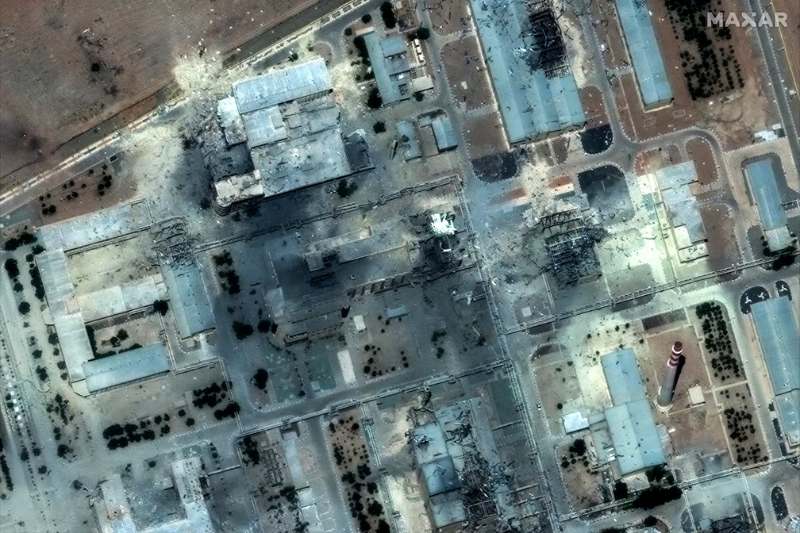
The global spotlight is once again fixed on Iran’s controversial nuclear program. In early June 2025, the United States launched targeted airstrikes on key Iranian nuclear facilities. These precision attacks were aimed at halting Iran’s uranium enrichment activities. But were they successful?
Recent reports suggest that the strikes may have only slowed, not stopped, Iran’s nuclear ambitions.
The operation, reportedly named “Midnight Hammer,” targeted three major nuclear sites: Natanz, Fordow, and Isfahan. These facilities have long been associated with uranium enrichment and covert nuclear development.
According to U.S. officials, the strikes were carefully planned to minimize civilian casualties while damaging core infrastructure. However, new satellite images and leaked Defense Intelligence Agency (DIA) assessments suggest the damage may not be as extensive as initially claimed.
A classified DIA report, leaked just days after the strikes, has sparked intense debate in Washington. The document reportedly claims the airstrikes set Iran’s nuclear program back by only “a few months.”
This contradicts the public messaging from senior U.S. and Israeli officials, who earlier stated that the strikes had “crippled” Iran’s ability to produce weapons-grade uranium.
The DIA’s warning: Iran’s advanced centrifuges may be repaired or replaced faster than expected. Iran's underground facilities, especially Fordow, suffered limited structural damage.
Iranian leaders wasted no time in responding. Supreme Leader Ayatollah Ali Khamenei described the attacks as “cowardly” and vowed revenge. But beyond rhetoric, Iran’s real move has been calculated.
Reports from the International Atomic Energy Agency (IAEA) confirm that Iran has already resumed low-level uranium enrichment at backup nuclear sites. While full-scale operations at Natanz and Isfahan are still offline, experts say the nuclear knowledge and infrastructure remain intact.
Iran is also refusing to cooperate with international inspectors for the time being. The IAEA has raised concerns about unaccounted uranium stockpiles, which may have been secretly relocated before the strikes.
This latest episode raises urgent questions for the international community
Is military action enough to stop Iran’s nuclear program?
Has diplomacy failed?
Could this lead to a broader Middle East conflict?
Israel remains on high alert. Prime Minister Benjamin Netanyahu praised the U.S. action but warned that “more may be necessary” if Iran continues enrichment.
Meanwhile, the European Union has urged all sides to return to the negotiating table. China and Russia, both allies of Iran, have criticized the U.S. strikes and called for restraint.
The fallout is not just international. In Washington, lawmakers are divided over the success and implications of the military operation.
Senator Markwayne Mullin (R-OK) has supported the strikes but is calling for stronger follow-up actions. “You can’t just slap them and walk away,” he said during a recent Senate Armed Services hearing.
Others, like Senator Chris Murphy (D-CT), are urging for diplomacy. “We need lasting peace, not momentary shock,” Murphy told CNN.
The leaked DIA report has also triggered discussions about intelligence integrity, secrecy, and the political risks of military action in an election year.
Prominent Fox News anchor Martha MacCallum dedicated several segments to the strikes and their fallout. In her June 24 broadcast, she hosted former military officials who questioned whether “Mission Accomplished” was prematurely declared.
Her analysis emphasized the need for clear strategic goals, not just tactical victories. “We have a duty to ask if this truly makes the world safer,” she noted.
MacCallum’s coverage has played a key role in shaping public discourse, especially among conservative viewers.
At this stage, Iran’s nuclear program is damaged but not destroyed. The IAEA, UN, and world powers face mounting pressure to act. Another military strike could risk full-scale war. Yet inaction may embolden Iran to accelerate its nuclear timeline.
The Biden administration, for now, is remaining cautious. Diplomats are engaging behind closed doors while military forces stay on alert across the Persian Gulf.
One thing is certain — this crisis is far from over.
The 2025 Iran nuclear update is a sobering reminder that military solutions, while impactful, often offer temporary fixes. Iran still holds the knowledge, technology, and determination to pursue its nuclear goals.
Whether through diplomacy or further action, the world will need a coordinated, strategic approach to ensure lasting peace and security.
For now, the world watches — and waits.